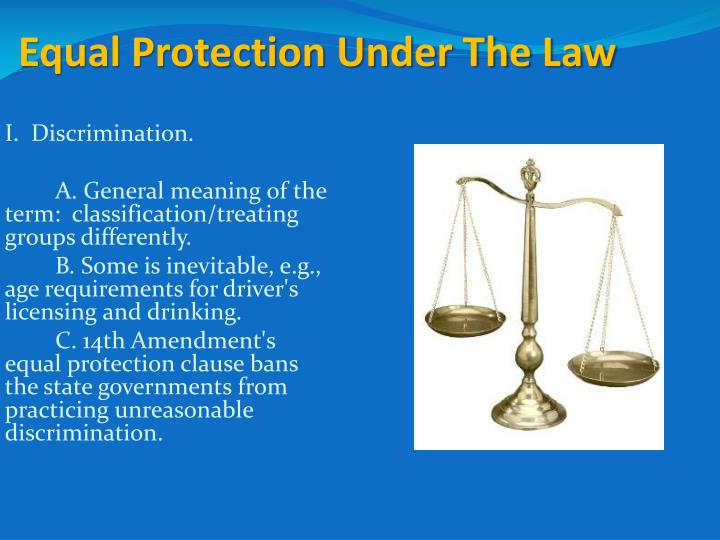

EQUAL PROTECTION SERIES
the claimant has been engaged on a series of contracts.the employer has deliberately concealed the pay inequality.the claimant is suffering from an ‘incapacity’.


if the claimant is still working for you - the time limit has not started.Any clause which tries to prevent an employee discussing or seeking pay information to find any differences in pay linked to a protected characteristic will be unenforceable.Īs a general rule, an equal pay claim must be lodged with an employment tribunal within six months of the date of the end of an individual’s employment with their employer. The Equality Act 2010 prohibits certain pay secrecy clauses in employment contracts. someone she used to work with in the same employment prior to the sale of the business, where the Transfer of Undertakings (Protection of Employment) Regulations 2006 apply.her predecessor in the job, however long ago he did the job - although the comparison will be limited to what he was paid when his employment ended and not take into account any pay rises he might have received had it continued.someone she is working with at the present time.applying to the employment tribunal for the disclosure or discovery of information, including about comparator.using information gained by going through her employer’s internal grievance procedure.seeking advice from her trade union representative.using her own knowledge and experience of the work done by her male colleagues.Her employer cannot influence the choice of comparator and the comparator does not have to give his consent to being named in the equal pay claim.Ī woman may be able to select a comparator by: She can also claim equal pay with more than one comparator. It is for the woman to select the man or men she wants to be compared with. When a woman claims equal pay, she must compare her pay to a man who she believes is carrying out equal work but is being paid more for it, known as a 'comparator'. for the same employer or an associated employer but at a different workplace where common terms and conditions apply, for example at another branch of a storeĮuropean Union law also allows a woman to compare herself to a man who is not in the same employment but where the difference in pay is from a single source with the power to fix the difference.įor example, in one case, nursery school employees were able to compare themselves with waste disposal collectors employed by the same council.Īlthough the two sets of employees were employed at different establishments and did not have common terms, the council had control over the pay and grading of both.for the same employer or an associated employer (such as a parent organisation) at the same workplace.A woman can claim equal pay with a man working:


 0 kommentar(er)
0 kommentar(er)
